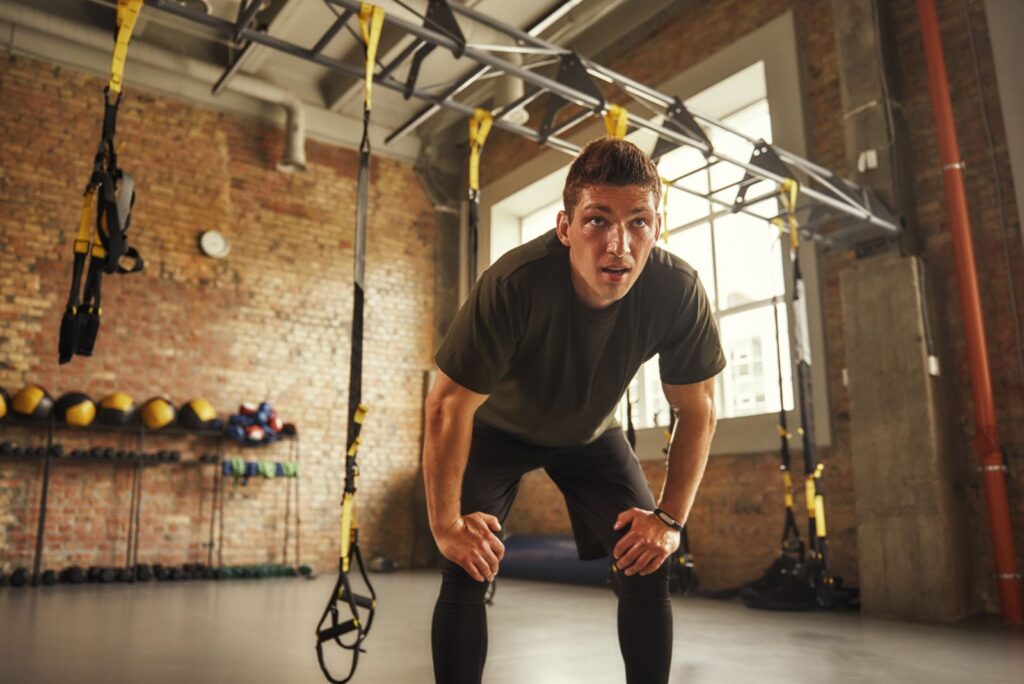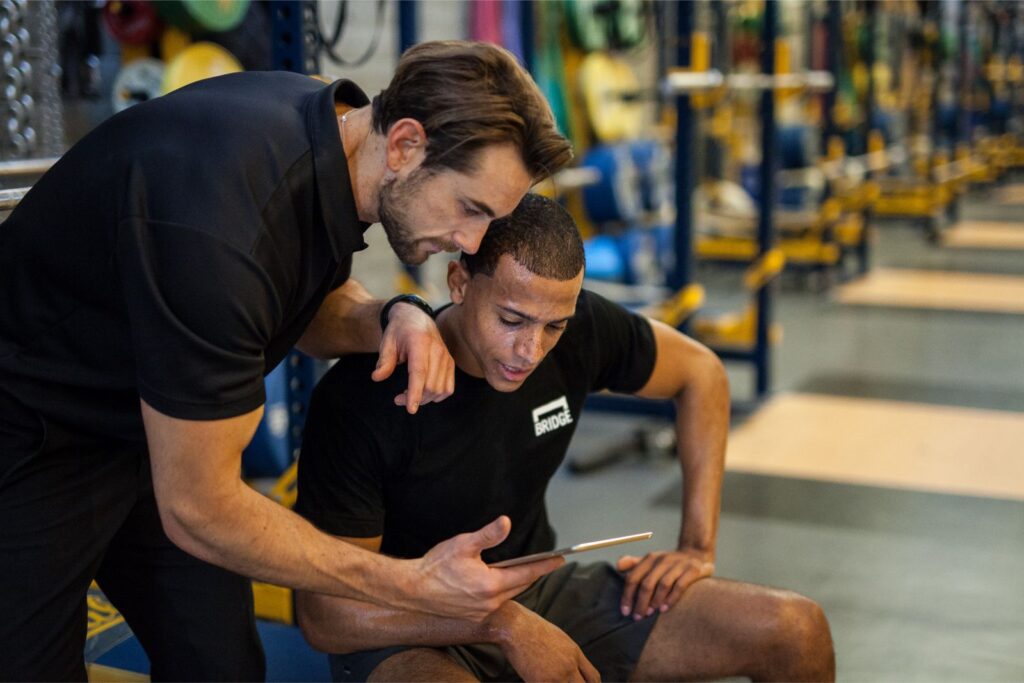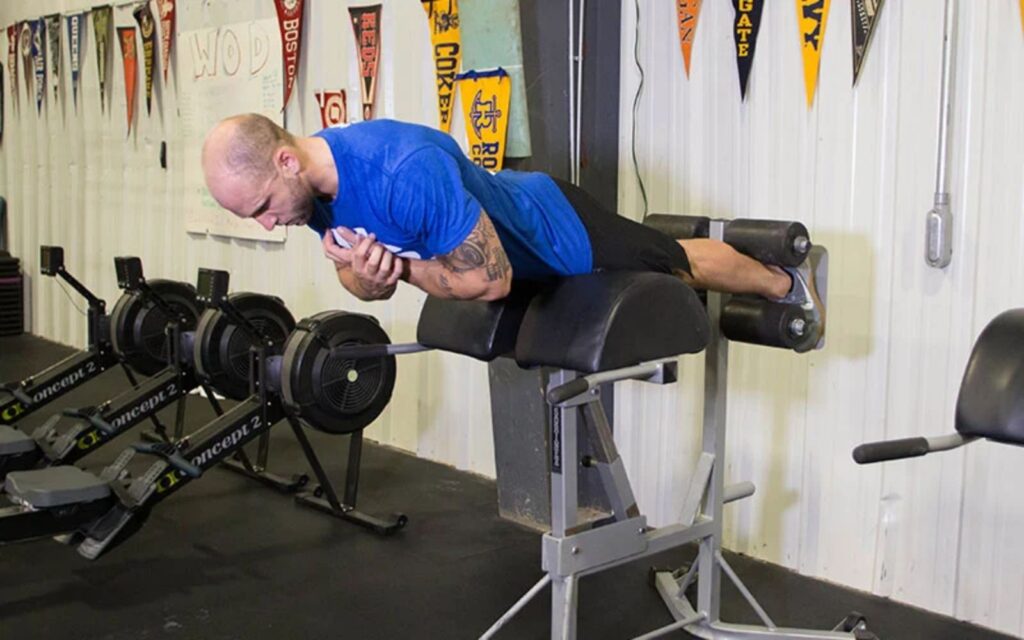
Fatigue management for skinny guys.
Hey guys! Today we are talking all about fatigue management for skinny guys… After reading my previous article all about training and programming to gain muscle for skinny guys. Here is a link to the article in case you missed it :https://www.theavgguysnutritionandexerciseguide.org/exercise/gain-muscle-fast-for-skinny-guys-training-and-programming/ you have one part of the puzzle. But you will soon run into a problem! Now you have fatigue accumulated from productive but disruptive training.
So in this article I will be breaking down fatigue management and how best to use it for better results. Fatigue is a guaranteed by-product and we must manage it to continually make progress. Sleeping well and a nutritious diet can somewhat mitigate the effects of fatigue. But after a while more intensive methods are needed to bring our body back to baseline. Fatigue is broken down into 2 different types: physical and psychological. The former can be broken down again into 3 types: systemic, local fatigue and axial fatigue.
Fatigue management for skinny guys: Types of fatigue
1. Systemic fatigue.
Psychological fatigue comes about as a result of training intensely for a number of weeks to months. It can be exacerbated when dieting or accounting for other life stressors. Systemic fatigue includes all physical and psychological stressors and impacts the whole body. It’s found in the cardiovascular system, impairing our cognitive abilities, force production and coordination. You may notice it when you have been working a lot at work. You’re studying and perhaps your life is a little bit stressful. Your body can only endure this for so long until your sleep starts to worsen. You’re more irritable, you’re losing motivation to to do things you usually like doing.
Signs of systemic fatigue with regards to training may be a lack of a desire to train. “Do I have to train legs today after work and then prepare for the test next week?”. Persistent systemic fatigue can cause feelings of powerlessness. If you do not deal with it in a timely manner, more serious side effects can be observed. These may begin to affect the immune system.
2. Local fatigue.
Local fatigue is the physical disruption of the individual muscle and the depletion of psychological and physical resources. Paying close attention to local fatigue can be used as a guide to tell us if we have stimulated the muscle effectively. Local fatigue can range from feeling a little soreness in the muscle. This soreness can last up to 3 days or more. Feeling muscle soreness days after training is known as DOMS or delayed onset muscle soreness. It’s common to experience DOMS after introducing a new exercise. It’s a novel stimulus to the body and so causes greater disruption.
Joint disruption also makes up local fatigue but is not a sign of effective training in itself. Constant acute joint disruption can lead to chronic inflammation and degradation of joints, which can be seen with tendonitis. This can take from weeks to years to recover from. If left untreated and limits our ability to get a great mind muscle connection from an exercise.
It’s especially important to figure out the exercises that feel good on your joints while you exercise. Avoid the ones that seem to place unwanted stress on your joints. We are are built differently, so this will be individual. It will require some trail and error to work out exercises best suited to your body. If you’re looking to find out a little bit more about local fatigue and fatigue in general. I like this article by Chris Beardsley which explains it well https://sandcresearch.medium.com/how-do-different-types-of-fatigue-affect-hypertrophy-and-recovery-4b5bd500bcb
3. Axial Fatigue.
Axial fatigue technically a form of local fatigue produced within our muscles (heavily taxing the erectors). This comes about after performing exercises that load the spine such as deadlifts and barbell rows. The effects look a lot like systemic fatigue. While programming exercises axial fatigue will limit our ability to perform the subsequent exercise with the same effort compared to the first if the erectors are both involved in both exercises. This could look like performing front squats after heavy deadlifts. Your front squat performance won’t be as good as it could be if you had not done deadlifts beforehand. Most likely your erectors will fatigue before your quadriceps will, leaving muscle growth on the table.
Detecting fatigue.

When training as a skinny guy or girl we want to use exercises which are as stimulative as possible but tax our joints and connective tissues as little as possible. This is so we can keep training and not have to take a break due to angry tendons and joints. Though this is a catch-22, as often the most stimulating exercises are also the hardest on joints and connective tissues. A prime example of this may be the barbell bench press or dips on the elbows.
The more effort we must exert while performing an exercise the more fatiguing. Systemic fatigue rises at a faster rate with psychologically intense sets. (I’m thinking multiple sets of high bar squats, owh!). While training we should always look to train with flawless technique. If we cheat while performing a movement, we are incorporating other muscles into the movement and they are not the muscles being targeted. This only brings about greater fatigue, the 2 bringing a double whammy of unfavorable outcomes.
Stimulus to Fatigue Ratio (SFR).
Stimulus to fatigue ratio is the amount of stimulus we get for a session, exercise, technique or exercise program minus the fatigue generated. To improve the SFR of an exercise we should find a way to enhance the stimulus, reduce fatigue or a combination of both. In the real world this could look like stiff legged deadlifts instead of conventional deadlifts. The former hitting the hamstrings more but we use lesser weight, reducing injury risk and fatigue. With a regular deadlift, we can lift more weight but at a high fatigue cost.
The best SFR exercises put a lot of force through the muscle while we can also use a large range of motion. We shouldn’t have to use a lot of other musculature to complete the movement. The chosen exercise should have the lowest possible energy expenditure to keep systematic fatigue low. It should not cause a lot of axial fatigue either. You may ask yourself “but Jack that sounds like I can’t squat, deadlift or row then?”. You would be right in thinking that yes these exercises seem to include some things we want to avoid or at least limit for optimal SFR. But these exercises are ALSO the most stimulative and bring about the best results for the amount of time and volume we must use while performing them.
Big compound movements have their place in training along with more isolation type exercises which seem to better fit into the SFR exercise mold but also have their drawbacks which compound movements make up for. To solve this problem, include both in your programming. Beginners are able to include more compound movements as they lift less total weight compared to the more advanced. The more advanced lifters can add more volume from isolation exercises to increase total volume, reach MRV for a muscle group without letting fatigue beat them to it.
Putting SFR into practice.
As skinny guys and girls while performing any exercise in the gym we should focus on a solid mind muscle connection. This is made easier by controlling the eccentric and concentric portions of the lift . This allows for an improved stimulus and reduced stress on our joints. Avoid unneeded movements to move the weight (beware cheat curl fans!). The movement should target the intended muscle and limit the use of others. There is a little bit of individualism to this too. Each person’s body is structured differently and 1 movement looks and feels different for 1 person compared to the next. Play around with technique and find a technique and exercise that works for you. So if you can’t really acquire a great mind muscle connection with your lateral delt muscles while performing dumbbell lateral raises. But feel them working on cuffed cable lateral raises, include the latter in your program.
SFR and volume.
Low volume programs will have a better SFR for beginners as they can receive a great stimulus with minimal volume due to their training age. Their bodies have not encountered adaptive resistance yet and don’t need to include sky high amounts of volume to make progress. Performing 10 sets of high bar squats versus 5 per week for a beginner may actually just bring about more fatigue. Increase your MEV’s and now you have to use more resources to recover from “junk volume”.
This energy could have been better spent on recovering from the ample amount of volume you need to grow a muscle. While now we also have the problem of increased systematic fatigue. All you have done is made yourself more fatigued and cut down your time spent in stimulative training! As mentioned previously, fatigue is just going to happen like when training from MEV- MRV. But training with high volumes may be the only way to make progress and so is a necessary evil.

SFR and RIR.
Training at high RIR’s (5+) are not very fatiguing and have low SFR’s due to low stimulus. Training between 4-1 RIR offers us as skinnier guys the best tradeoff between stimulus and fatigue. The majority of our training should be spend training within this range. The great thing about introducing new exercises at the beginning of a mesocycle or going from a period of low volume training to higher volume training is that we can get a fantastic stimulus training at 3-4 RIR, giving us the best SFR at that moment. Let’s ask ourselves 2 questions to see if we are on the right track with RIR:
- Is this session enough to cause the best or nearly the best gains? (Am I training hard enough?)
- Is this session’s stimulus so fatiguing that it will negatively impact on our planned progressions within the mesocycle? (Am I training just hard enough to make progress but leave a bit in the tank for future progression?)
We want to answer with a yes and no respectively. Keep in mind that we want to train as much as we possibly can and rest as little as possible. To have a better training-to-deload ratio. This could mean progressing just enough to make progress, but not making giant jumps in weight and volume which carries more fatigue. Ultimately cutting our accumulative phase short. For a beginner lifter, the appropriate length of an accumulation phase could be anywhere from 3-8 weeks of productive training. For intermediates more like 4-6 weeks.
Fatigue prevention.
We should always train within our own volume landmarks (up to MRV) as completing more sets on top of this just adds unwanted fatigue. Following a workout from a pro bodybuilder out of a bodybuilding magazine is probably not a good idea. As a skinnier guy, your training volume is not going to be the same as someone who has considerably more muscle and has been training for longer.
You will know you have hit your MRV when you are struggling to recover before the next session of the same muscle group. If you notice you are not hitting your weight targets while sticking to your desired RIR. Or RIR is decreasing but your not able to add any weight or volume for 2 sessions in a row. You should take a deload or recovery session for that muscle group. It is also worth taking a note of your MRV so you have it for future reference.
Minimize fatigue by:
- Using safe lifting technique: Unwanted extra movement during a lift is just going to add more fatigue.
- Lift with a controlled eccentric and amortization phase: Make sure you have control over the weight at all times, don’t relax with the weight and make sure not to bounce the weight on the amortization phase.
- Use a full ROM: You are forced to lift less weight, meaning less fatigue. Using full ROM may mean you must slow down the movement equaling a reduced probability of unwanted movement and less chance of injury.
- Breath and brace with compounds: Use solid breathing and bracing while performing compound exercises. We keep our technique stable, we produce more force, and less force is produced from supporting muscles which means lower systematic fatigue.
- Avoid joint pain: This is individual. Find an exercise that works your muscles more rather than your joints. Try different techniques and grips too to find what works for you.
- Focus on the mind-muscle connection: If you perform a lift with great technique you will have less fatigue but also you will be able to target a muscle more effectively leading to improved SFR’s.
Alleviation Strategies: Less fatigue, more gains.

To alleviate unwanted fatigue we can use some different strategies some of which include taking rest days, recovery sessions, deloads and active rest phases. All of these help to bring down fatigue to varying degrees and can be used as part of a plan or in an auto-regulatory manner.
Rest days.
These are days during the week when you don’t train in the gym They allow us to reduce both physical and psychological fatigue. Some argue taking 2 days of rest back to back is better than taking 1 day off. Maybe this is something you can play around with yourself. I find for myself 2 days off is great as by the third day I’m ready to get back into some productive training with a clear head after not thinking about the gym much the previous days.
Recovery Sessions.
These can be implemented instead of taking a 2nd or 3rd day of rest within a microcycle/week of training if we feel unusually fatigued. We train the target muscle groups as planned but at maintenance volume to conserve our muscle mass. Because the volumes are low, we cannot grow new muscle tissue but it can help to speed up the recovery process. Another great aspect of utilizing these days is that when the next session comes around we don’t have as much cumulative fatigue. We can keep training a muscle group with as much effort as we can. It should be noted that recovery sessions can be used for just a few muscles to allow for fatigue to dissipate before continuing with training. If larger muscles are affected (quadriceps, lats and pectorals) which contribute to systemic fatigue the whole session should be done at maintenance volume.
How to take a recovery session.
Take a session as normal but cut the reps and sets in half. If you feel the weight is too heavy, cut the load and reps in half but keep the same number of sets. Now in the next session we can progress in weight but volume has dropped back between MEV-MRV so we have more room to add volume. (You do this because you reached MRV too early.) If you are taking a recovery session because of an injury, reduce the volume by 1-2 sets per exercise but progress with load.
A deload.
This is a pre-planned or used in an autoreglatory manner. A deload is a period of rest (usually a week) after a few weeks of hard training/a mesocycle. If you have already used recovery sessions for at least half of your muscle groups, a deload is a good idea. They are used to bring down cumulative fatigue (both systemic and local) which has been building up over the previous weeks of training. You should make use of a deload once you have hit MRV for multiple muscle groups and to give your joints and connective tissues a break from training.
A recovery session is not a strong enough remedy to bring fatigue back down to baseline levels or give your body enough time to heal. Wheres a recovery session will help lower local fatigue, systemic fatigue is still present. If you keep training there is always the chance you will get sick. Your body can only recover from so much stress placed upon it.
How to take a deload.
To perform a proper deload, for the first half of the week, cut the sets and reps in half. Keep load the same as your final week of stimulative training. In the second half of the week, also cut load in half. Lifting the same load the first half of the week, will keep your muscles somewhat primed for the start of the next mesocycle. We hit the ground running and build on where we left off.
I know from personal experience you can have so much systemic fatigue that you sometimes don’t have a lot of motivation to complete a deload like this. Maybe you would rather just take the full week off entirely from training. There is nothing wrong with that. It’s just you won’t come in as “ready” for the next mesocycle as your body is not used to lifting the heavier loads and the practice that comes along with that. If you take your training very seriously, a proper deload is for sure better than just taking the whole week off. But we all have different things going on in our lives. we all rate the importance of these activities differently. At the end of the day you decide what works for you and your lifestyle.
What exercises to use during a deload?

We have a few options here. We can continue to use the same exercises from the last mesocycle which makes weight calculations easier. It saves us the stimulus of the newly introduced exercises for the next mesocycle. The problem with using next mesocycles exercises is that they may be overly stimulative. We want to take advantage of this going into the next few weeks of training for more muscle growth. On the plus side, you get to practice with the new movements, increased mind-muscle connection, and better stimulus-to-fatigue ratio. This sets you up nicely for more weeks of training.
If it hurts, stop doing it.
Experiencing overuse wear and tear injuries from the last mesocycle? Continuing to use them will only exacerbate the problem. Introducing new exercises in this situation would be wise. We also have a third option which is to replace exercises with less fatiguing exercises. This helps to bring down axial loading for example. This could be swapping stiff leg deadlifts for back extensions. This is more appropriate for advanced lifters. Beginners benefiting from the first option and intermediates being able to use both the first and second options.
Active rest phases.
The final method we can use is taking active rest phases. A period of about 2-4 weeks where we do not train at all or very little. Use active rest phases to bring down psychological fatigue. To heal small injuries and to allow hormones to return to functioning normally. We can take a whole 2 weeks off from training where we will experience a little bit of muscle loss. But this is very minor. Muscle loss is easily regained when resuming training after 2 weeks. For longer active rest phases, we can train at maintenance volumes to conserve muscle mass. Use them once per year and they can work well in tandem with a planned holiday.
All strategies mentioned can both be used either pre-planned or in an auto-regulatory manner. For instance you can take a pre-planned rest day even if feeling very rested. In this case, auto regulate overload over the next few training days for more stimulus. A pre-planned recovery session can be useful if you are very busy. You can then increase the length of the accumulation phase and make each session more stimulative to continue making progress.
Managing fatigue: Limiting outside stressors.

Taking deloads, rest days and recovery sessions are useful. But reducing outside stressors is going to help you out massively too. The more stress we have in our lives, the more systematic fatigue we have present. This impacts on how hard we can train. These could be relationship, work and other life stressors. Sleep is also another hugely important pillar of recovery. We should look to get around 8 hours of sleep per night. You will quickly find sleeping poorly increases systemic fatigue and really impacts training. Potentially leading to missed sessions. This has a negative downstream effect and you’ll find yourself running into a wall very quickly.
The pub is nice..but so is sleep.
Sleep is one thing we can definitely manage.You can go to the pub and afterwards get 5 hours of sleep. If this turns into a habit you are actively sabotaging your own fitness progress.You will see that certain behaviors just “don’t work” while looking to build muscle. Going to the pub and drinking is very fun. But the late nights that come afterward are what is going to hold you back. Not to mention the added calories from some alcoholic drinks. Using caffeine to “get you through” training after a poor night’s sleep is not the way to go. You’re just putting a bandage on an injury that never seems to heal.
I like to tell everyone I speak to about building muscle. Having the desire to train and make progress is what sparks it and keeps you training. You train hard, consistently and put in your heart and soul into gaining more muscle mass. But here’s the thing. If your not taking the needed measures to manage fatigue and recover from training your spinning your wheels. At the very least leaving a lot of progress on the table. Because by now you should know that for every bit of productive training you complete there will be fatigue. That fatigue does not just disappear but will only continue to rise the more you train. So help yourself and take recovery more seriously.Or if you want to picture thus another way, with the gold being progress which just so happens to be on a Spanish Galleon. As captain Jack Sparrow would say “take it all and leave nothing left.”

So there you have it guys, 1 article on fatigue management wrapped up. Which I hope is going to help you achieve your goals of gaining muscle as a skinnier guy or girl! If you enjoyed, well in your gonna love the next article. In the next and final part of this series, I’ll delve into the best nutrition strategies to implement. To gain muscle quickly as a skinny person. See you in the next one!
